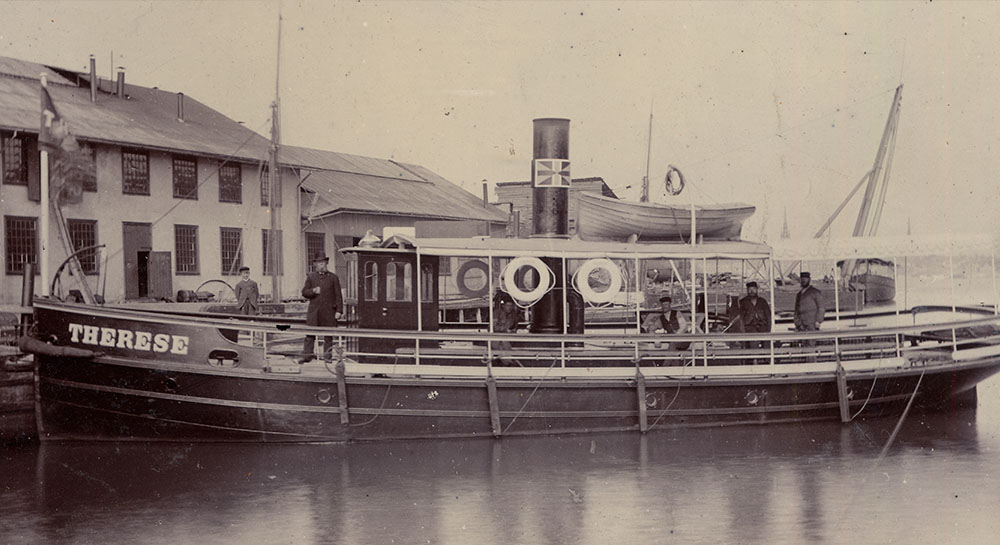
The spirit of the age: 1836–1853
From a historical perspective, Sweden was not used to peace. The country took a more peaceful direction only after losing Finland in 1809, and after establishing the union with Norway in 1814. Sweden stopped going to war under King Charles XIV John (born Jean Bernadotte and the founder of the royal dynasty of the same name). Rather than winning honor on the battlefield, Sweden now aimed to conquer national pride in other ways. The poet Tegnér expressed this as ”within Sweden’s borders win Finland back”. The king modernized the country’s infrastructure by building new roads and the Göta Canal.
Influenced by English liberalism, there was a new and different focus on business development. Although the politics of King Charles XIV Johan were essentially conservative, liberal ideas started to gain support during his reign. In 1840, the parliament prepared several reforms that would have a deep effect on Swedish society. A few examples are the introduction of the obligatory school system in 1842, the abolition of the guild system in 1846, and the Swedish Companies Act in 1848. Swedish business was gradually deregulated, reaching what is known as “complete business freedom” in 1864.
Thanks to a combination of long-term peace, reduced infant mortality, and technical development within agriculture, Sweden’s population increased. Areas outside the main cities grew particularly fast, and a rural proletariat started to take shape. The national passport was abolished, giving the population an opportunity to move freely within country as well as moving abroad. As a result, many rural citizens moved to the cities, where work was available in the new industrial areas. At the same time, lack of housing and poor sanitation created poverty and bad health.
The possibility of starting a new life in America looked increasingly appealing for many people. When news of the gold rush in California reached Sweden in 1849, emigration took off. At this time, the state church was the only permitted religious community in Sweden. Some of the early emigrants made the move to the other side of the Atlantic for religious and social reasons.
A new phenomenon was that people started to organize themselves around a common interest or goal. An impressive number of associations, societies, guilds, companies and voluntary associations appeared, independent of the state and local municipalities. This was essentially the fruit of the Enlightenment, but the new communities were also inspired by the Pietist revival movement and the development of civil society in the United States.
The heavy consumption of spirits started to be seen as a social problem. The temperance movement was the first popular movement in the country. Based on the American version, it can be seen as a reaction to the widespread drinking habits. Several prominent business people were involved in the early days of the temperance movement, for example the English-born inventor Samuel Owen. He was best known as a steamboat maker and for his mechanical workshop at Kungsholmen. Devoted to sobriety, he founded the temperance organization Kungsholmens Nykterhetsförening in 1832. Another example is the royal physician Magnus Huss. He described Sweden’s drinking habits as an epidemic disease and came up with alcoholism as a diagnosis.
Many priests played a prominent role in the temperance movement. From the pulpit, they spread the word about the devastating effects of hard liquor, warning people about broken families that ended up living in sin. One of these was the priest Peter Wieselgren in Skåne, a county in the very south of Sweden. In 1836, he founded a sobriety association in Västerstad. After three years, the association had 1,600 members all over southern Sweden. The national organization called Svenska Nykterhetssällskapet was founded in 1837, and local sobriety clubs were set up all over the country. Through these clubs, many Swedes experienced community-based democracy for the first time.
Despite the popularity of the temperance movement, the demand for spirits went up from the end of the 1840s. The trend is evident from statistics that reveal a higher number of drunk-related crimes during this period. One reason was no doubt the breakthrough of factory produced spirits. A more efficient manufacturing process resulted in both cheaper and better products. As trade took off in rural areas, vodka became the most important commodity for the rapidly growing number of commercial stalls. This is when many people started to oppose the high profits that merchants could make on spirits, and called for a regulation of alcohol production.